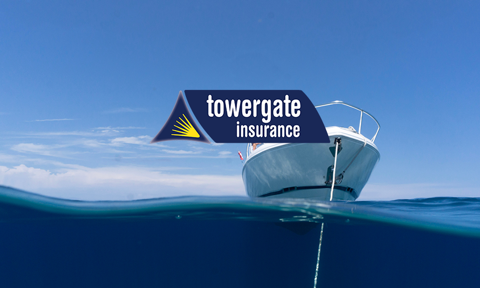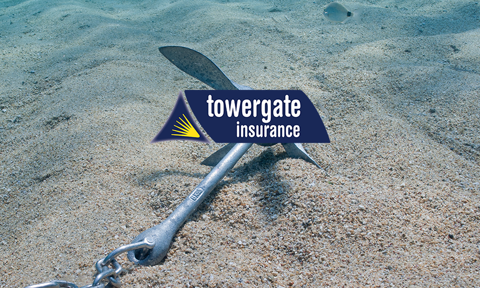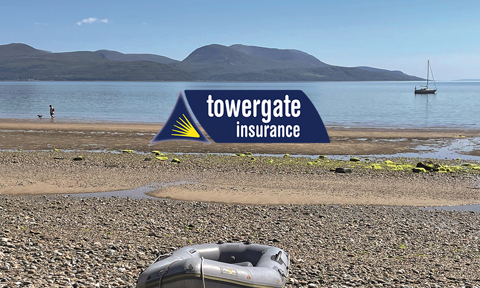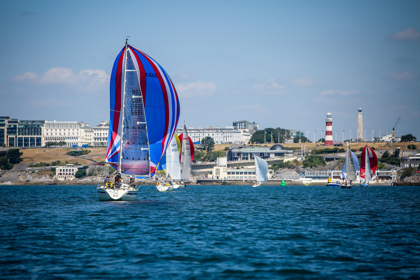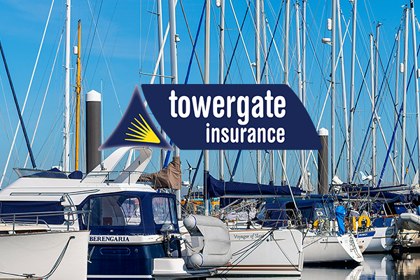Welcome to our blog series, created in partnership with Towergate Boat Insurance. In this series, we'll explore the essentials of boat ownership and making the most of your time onboard. In this entry, we're looking at how to safely anchor your vessel allowing you to explore new destinations, coves and creeks in confidence.
Sitting onboard, under the stars, in a secluded cove, enjoying your favourite drink.
It's the vision of every boat owner's dreams but it is reliant on a very key skill - being able to expertly lay your anchor.
Will it hold? Is the sea bed suitable? Have I laid enough chain? What if the wind turns? Am I too close? Read on to get answers to many of your burning questions...

Where should I drop my hook?
Many popular anchorages are listed in pilot guides along with details of nearby hazards, optimum wind directions and general local advice. But the joy of anchoring is going off the beaten track finding your own! If this is your aim, here are some fundamentals to consider:
- Does your chosen location provide good shelter from prevailing winds?
- Is there a consistent offshore breeze forecaste?
- Is the depth around 3m-10m? (This will become crucial later on as we talk about how much chain to lay).
- What's the tidal range?
- Do you have enough swinging room and are there other boats nearby?
You will also need to look out for signs or buoys that state any Voluntary No Anchor Zones (VNAZ). For example, there's one in Jennycliff in Plymouth Sound and one in Osborne Bay in the Solent.

The Seabed
✔ Sand, mud, clay and pebbles make great for anchoring,
X Rocky boulders, seagrass and green covered seabeds are best avoided.
But how on earth are you supposed to know what the seabed is 10m under your keel?
There are some basic principles to follow, but there's also a certain degree of guess work. Start by looking at your charts, this will give you some indication. But, also, look at your surroundings. It is highly likely that the shoreline topography will stretch beneath you. So if the nearest point ashore is shingles or sand, then this is likely to be under your keel. If the shoreline is rocky, then that's not a great indication.
Another top tip is to check Google Maps on their satellite view. This different perspective can often give you a good idea of what makes up the seabed.

Depth, Chain and Warp
The general rule of thumb is you need to cast 3-5 times the depth, plus your bow height. So, if you're in 5m of water, you need to cast 15m-25m of chain, plus an extra metre or two for the height of your bow above the waterline. If your anchor line is made up of chain and warp, then you'll need to cast up to 6 times the depth plus your bow height.
It's highly unlikely you have 50m+ of line onboard, hence why the best depth for anchoring is in 3m-10m of water.
Top Tip - During the winter, measure 5m intervals on your anchor chain/rope and tie a cable tie to it. That will make it easier to know how much chain you've laid when at sea. Alternatively, you can paint your chain using the Red/Yellow/Blue/White/Green method or purchase coloured chain markers from your local chandlery which are inset into the chain links.
One more thing to consider is how much tide there is where you're sitting. If you're at low tide, you'll need to lay more line to allow for deeper water at high tide.

Room to Swing
Let's assume you have 25m of chain out. If you are expecting the wind or current to change direction, then you might swing 50m to the opposite side of your anchor point, in addition to the length of your vessel. That's quite some distance!
This is why you need to make sure you have carefully checked the forecast, and you have plenty of room from rocks, the beach and other boats in the surrounding area.

Types of Anchor
Plough, flat, grapnel, bruce, danforth, kedge, CQR, new generation, fisherman's. There are a lot of shapes and brands to consider if you need a new anchor, without even beginning to contemplate the required weight.
Your boat's weight and length, plus your cruising area will determine what type and size of anchor you will need. This is where a good chandler can help who knows the local area and can calculate the weight you will require for your vessel.
There are 2 other factors to consider:
- Be aware of cheap, unbranded copies which are often weaker and not made of stainless or galvanised steel.
- The best anchor in the world won't help you if you haven't laid it correctly!

How to drop the hook
So you have found a good spot, with plenty of space, you are confident about the seabed, you know your depth and you have calculated how much chain you need to lay. It's time to drop.
- Point your bow head-to-wind above your chosen spot and slowly lower your anchor.
- Begin counting how much chain/line you're dropping.
- Once the anchor is on the seabed and the line begins to slacken, slowly begin to reverse and continuing lowering until you've laid your calculated amount of chain/line.
- Reverse a little more, putting more tension on the anchor.
- Find a fixed point on the shoreline and gauge your position against it for a few minutes. Try giving your engine a bit more power. If your position doesn't move, your anchor is holding.
- Fasten off your anchor line on a bow cleat, removing the tension from the windlass.
- Return your engine to neutral and put up your anchor ball and turn on your anchor light.
At this point, you may wish to plot your point on GPS so you have a reference over the next few hours. It's also good practice to put out fenders on both sides, just in case someone else begins to drift towards.
Protecting your passion for boating
At Yacht Havens, we want to help you get the right boat insurance for your vessel. That’s why we have worked with one of the market-leading boat insurance specialists to create insurance policies and benefits designed to meet the needs of our Berth Holders.
What's more, Yacht Havens berth holders can enjoy a further 20% discount when you buy or renew a Towergate Insurance policy*.

